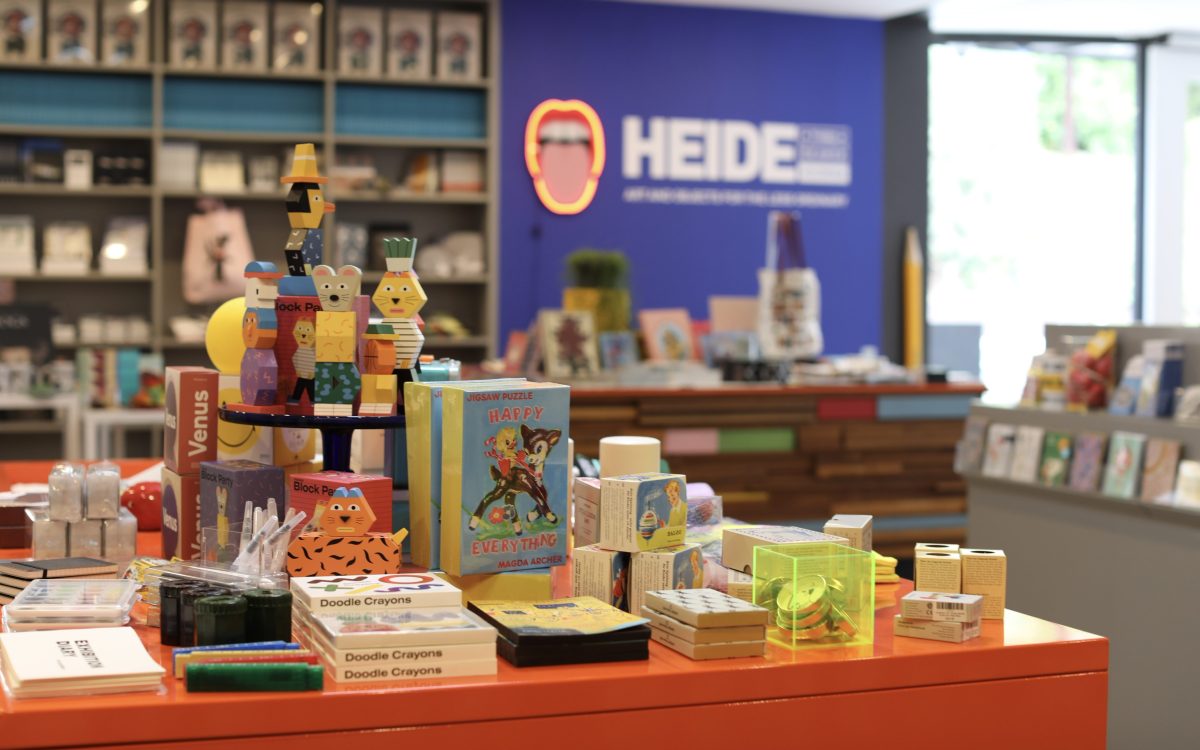Museum and gallery shops have become an integral part of the visitor experience, and a place to scout out fun and creative gifts which are perfect for the holiday season.
Yet, there is the feeling that such gift shops are becoming increasingly generic, filled with an array of funky jewellery, cool whisky glasses and printed tea towels in addition to ubiquitous art books and exhibition publications.
In the eyes of founder and Creative Director of Third Drawer Down, Abigail Crompton – an Australian-founded company which is now a global shorthand for ‘accessible art objects’ – what makes a museum store unique is dependent on its products.
‘A museum store should be uniquely of its place, it should reference and celebrate the artist who is local, and serve to bring the world of art for all to experience,’ says Crompton.
Recently, Third Drawer Down helped revamp the shop at Heide Museum of Modern Art (in regional Australia), and will undertake all product development for the museum locally and internationally as part of their new partnership.
Together, the two businesses will develop objects unique to the history of the museum and its art collection, keeping close to the ethos of the brand, which is to ’make art accessible and life less ordinary’.
Similarly, the Art Gallery of Western Australia (AGWA) Design Store recently announced an exclusive collaboration with the Perth-born international fashion designer and artist Aurelio Costarella. The subsequent series of limited edition scarves featuring details from three mixed-medium works also have a strong backstory of recovery and resilience.
They signal Costarella’s first foray into the textile space after a five-year hiatus since the closure of his eponymous brand in 2017 and a battle with a series of mental health issues.
Read: To merch or not to merch
This local engagement is a large part of what makes some shopping experiences more refreshing than others. Crompton adds: ’The more true to the artists, the museum and its patrons, the more reflective of place and unique the store is.’
Products-for-good are another trend popping up in museum and gallery gift shops, including ethically-made tote bags, cruelty-free candles, and purchases that give back to the community.
Northsite’s Art and Design store in Cairns – the international tourist destination – is a good example, with the shop playing a role in supporting Far North Queensland First Nations communities. Visitors can purchase anything from exhibited artworks to woven sculptures, as well as original etchings, linoprints and screenprints by Indigenous printmakers through Djumbunji Press.
These uniquely local artworks also make the gallery and store experience more memorable and one-of-a-kind.
Victorian regional space, Geelong Gallery’s Project genU, which champions local artists living with disability, is another step in this direction. Every tea towel and postcard profiles an artist’s work, increasing their visibility and sharing the outcomes of their creativity.
How museum and gallery shops bridge life and art
There’s no doubt that visiting the gallery shop has become a curated experience, from catalogue development and product placement to the details of where the sales outlet is located.
In many ways, making art more accessible is also an important role for such stores.
‘Right back in the 1870s, the Met [New York’s Metropolitan Museum of Art] sold etchings by the old masters to its patrons. The museum shop was born and it has never looked back,’ says Crompton.
And of course the Met Store is worth the rave, with virtually every object finding its origins in a cultural artefact in the museum’s collection, such as a necklace inspired by a 7th-century Frankish disk brooch or a hedgehog candleholder paying homage to mid-6th century BC Greek craftsmanship.
Bringing these objects home creates a lasting memory of the museum experience, and allows visitors to incorporate a piece of the art into their daily lives.
Unique on a different level – from beautiful to bizarre – are products at Hobart’s Mona Shop, which have the tendency towards take-home versions of the most controversial artworks on display.
Notably, Greg Taylor’s sculpture series Cunts … and other conversations (2008-2009) is now available in soap, chocolate, or an extra special gold-leaf edition.
A personal favourite would have to be the David Walsh Heat Reactive Mug, because Mona owner Walsh said: ’Don’t put my face on a fucking mug’.
So while exhibitions and objects on display form the main gist of the museum or gallery, the retail experience also contributes towards its image and brand, whether that be historical, innovative, community-orientated or weird and wonderful.





